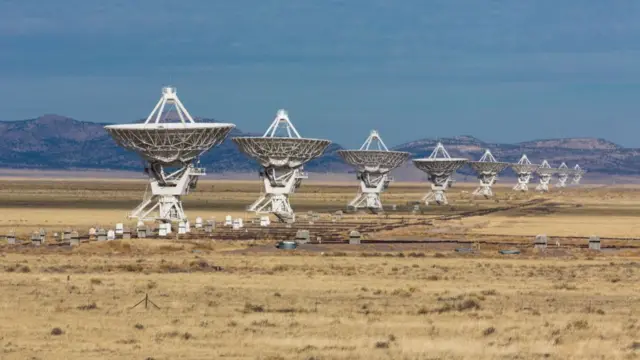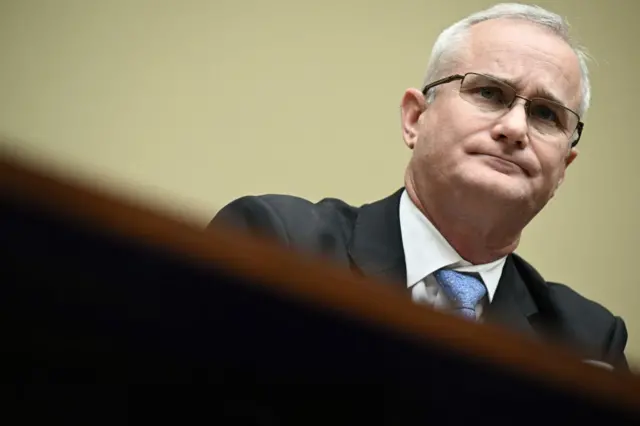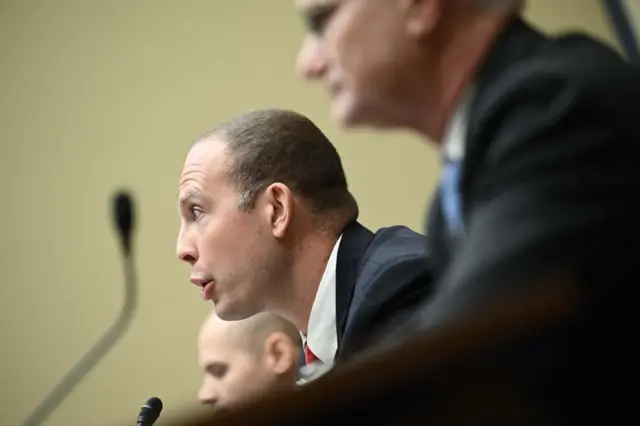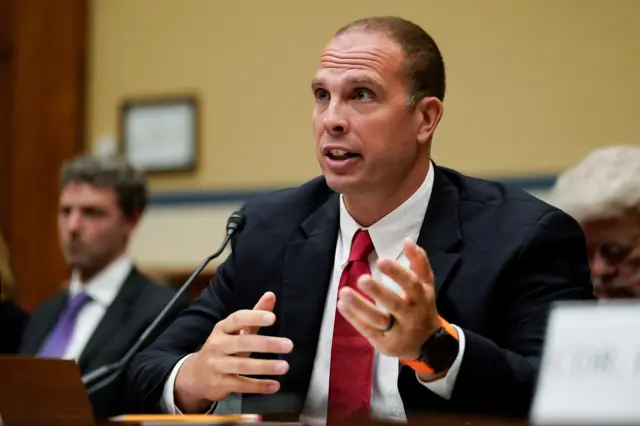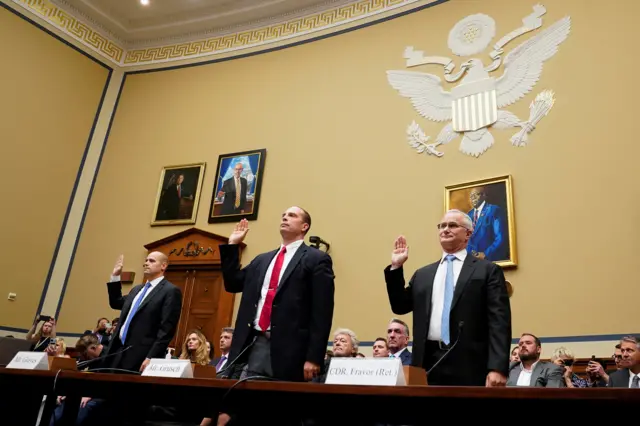The truth is out there...published at 18:39 BST 26 July 2023
Brandon Livesay
Live reporter
We're finishing up our live coverage of today's hearing at Congress into UAPs.
Listening to first-hand accounts from former members of the US military and intelligence community has been compelling, but also frustrating.
The witnesses claimed to have more knowledge, but were unwilling or unable to share it in a "public setting".
What we did hear will likely raise more questions from lawmakers, who are particularly interested in government transparency and national security.
Our writers today have been Kayla Epstein and Madeline Halpert, and the page was edited by Marianna Brady and Brandon Livesay.
Thanks for joining us.


